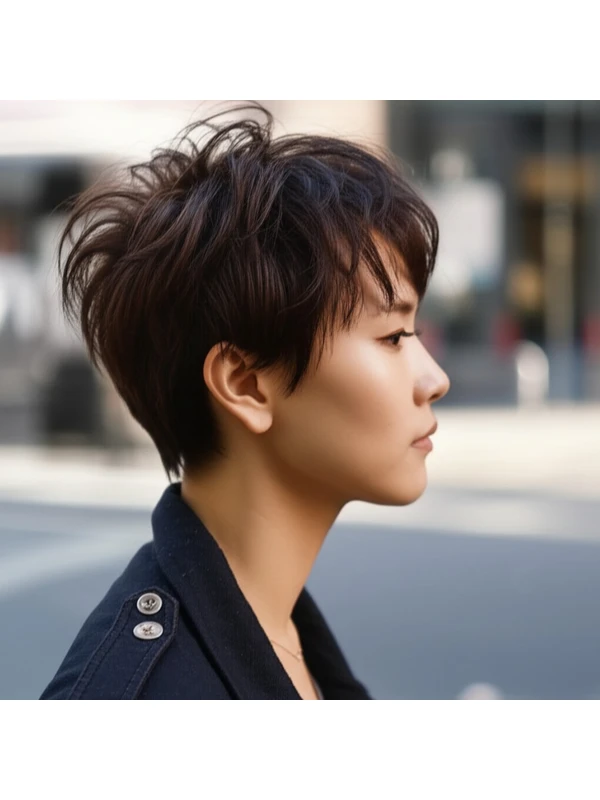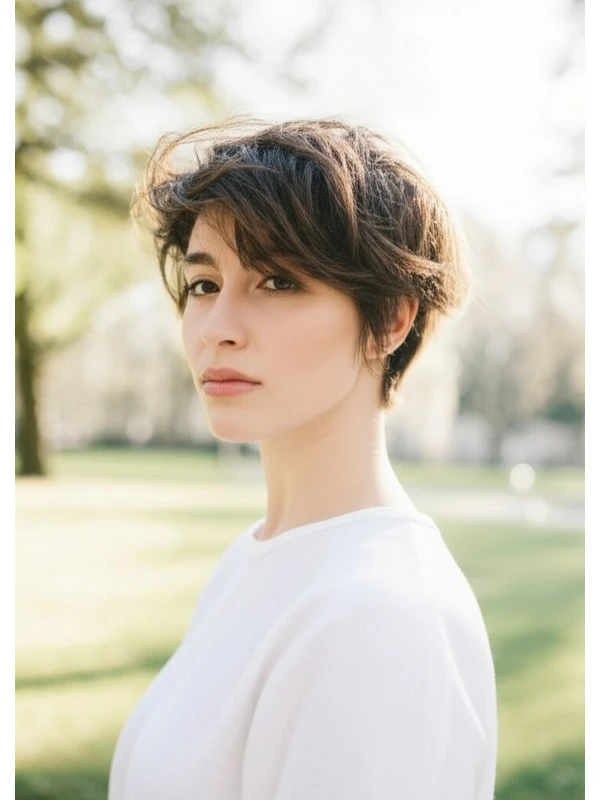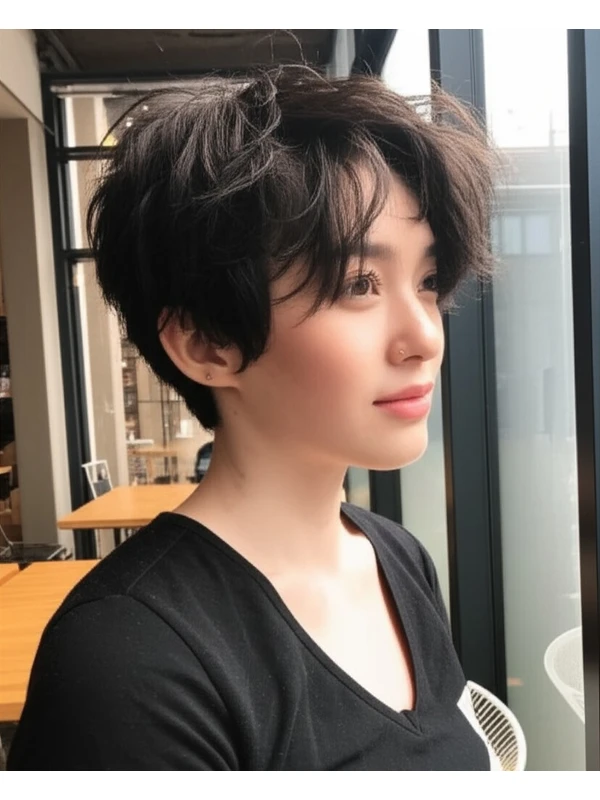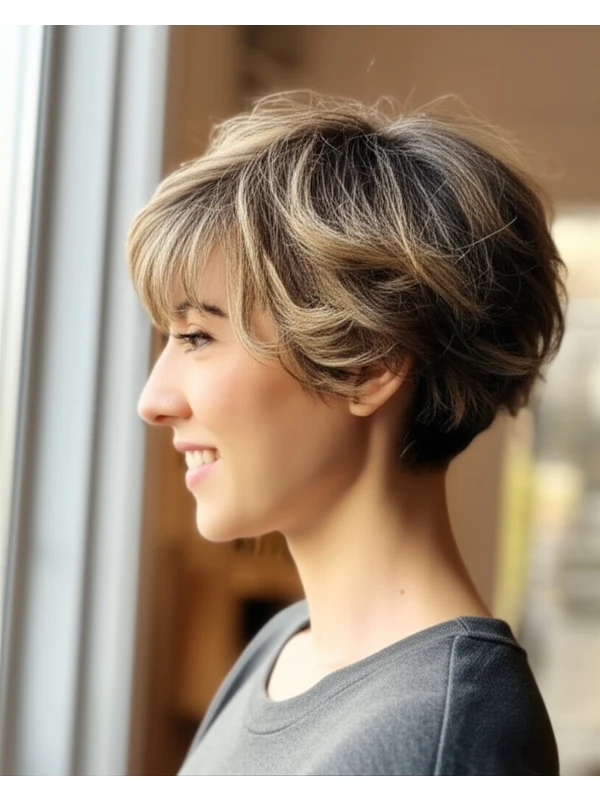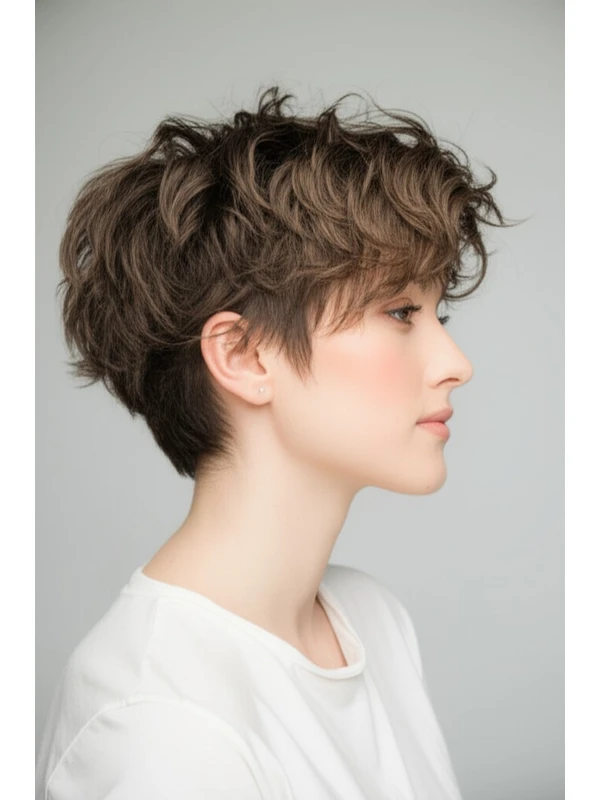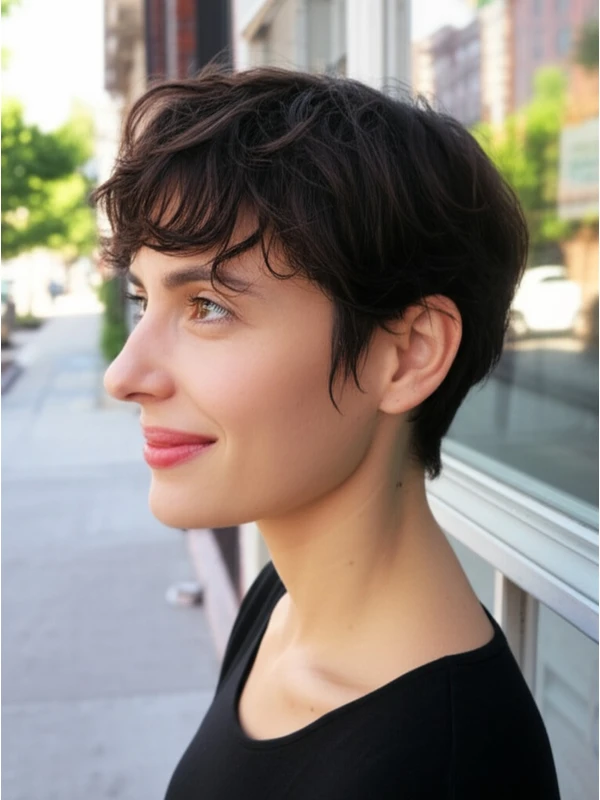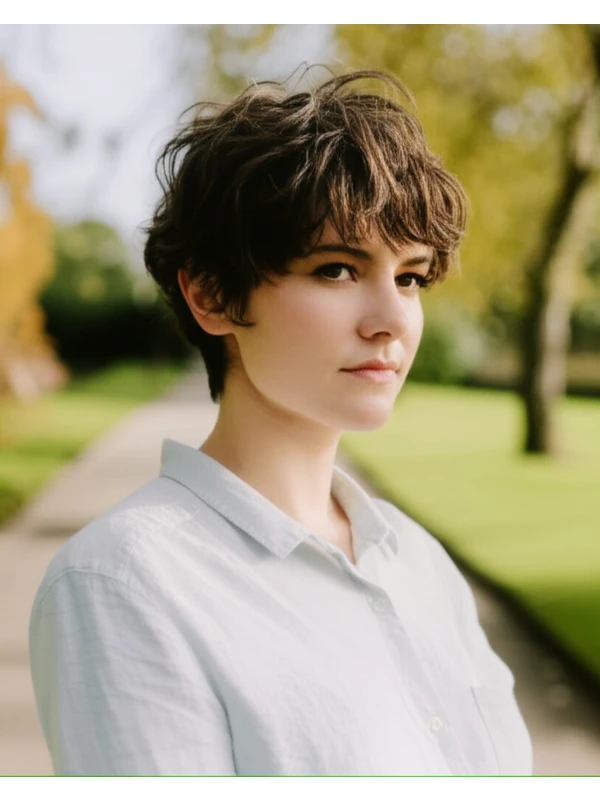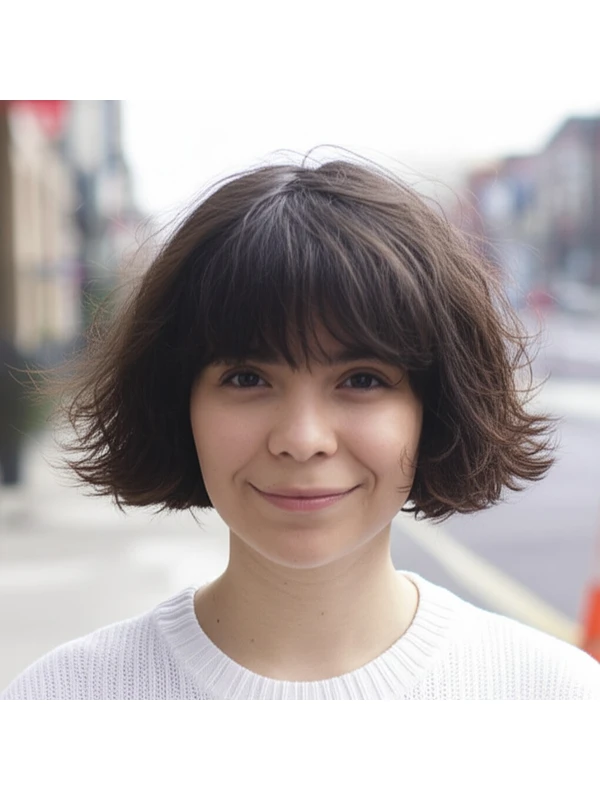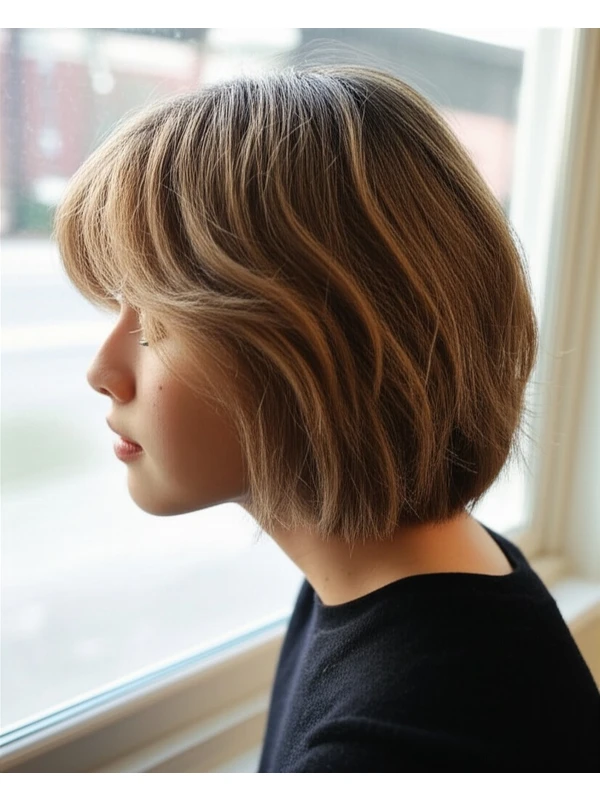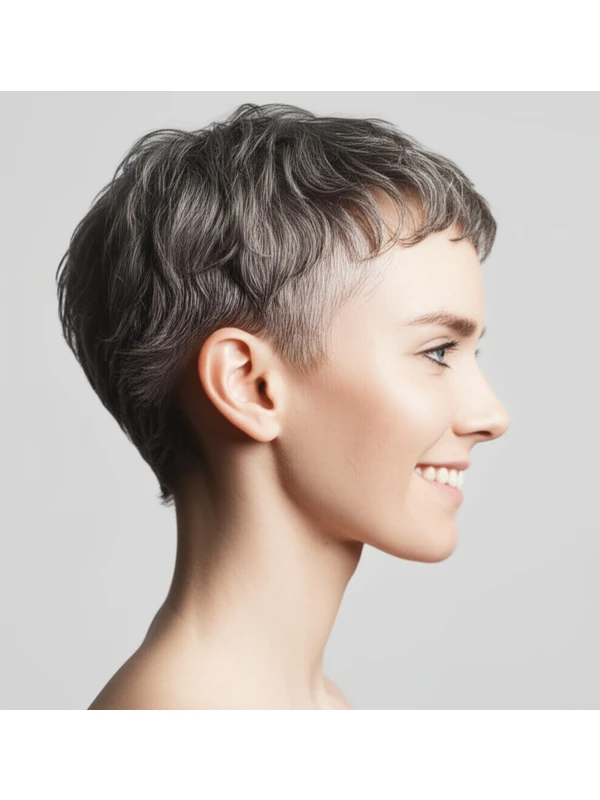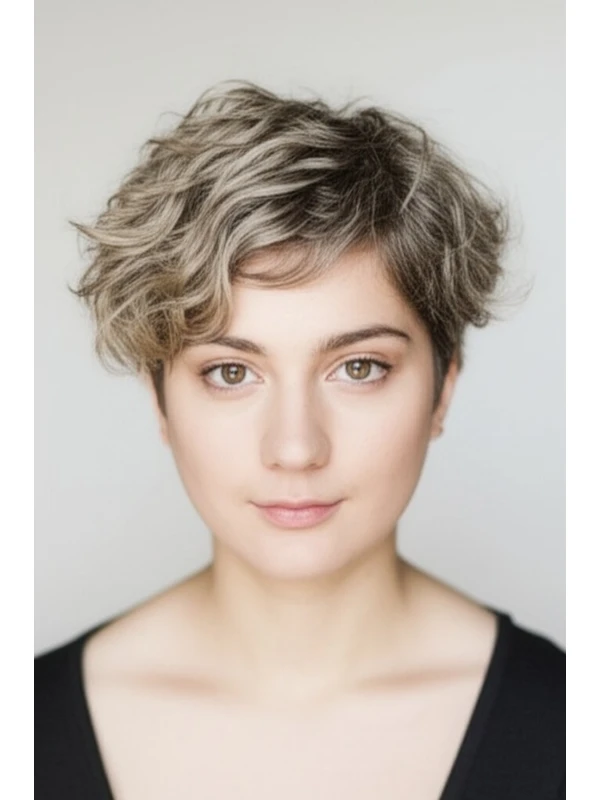#The Mixie Cut: A Modern Twist on Short Hair
The mixie cut is having a moment! It’s playful, modern, and surprisingly versatile. But what exactly is it? This guide breaks down everything you need to know about the mixie – from its origins to how to style it for your unique look.
#1) Background & Definition: What is a Mixie Cut?
The name "mixie" comes from blending “pixie” and “mullet.” It’s essentially a short, textured haircut with shorter lengths in the back and sides, gradually lengthening towards the front. Think pixie cut energy meets subtle mullet vibes – but much softer than a traditional 80s mullet!
Key Features:
- Asymmetry: A defining feature is often an unevenness between the back/sides and the front.
- Texture: Layering and point-cutting create movement and volume, avoiding a blunt or boxy look.
- Short Back & Sides: Shorter lengths at the nape of the neck and around the ears are standard.
- Longer Front: The hair gradually lengthens towards the front, often framing the face.
Typical Length Ranges: The back and sides can be anywhere from 1-3 inches long, while the front can range from chin length to just below the ear. This flexibility is what makes it adaptable!
Alternative Names: You might also hear this style referred to as a “wolf cut” (though that often implies more extreme volume), a "shag pixie," or simply a modern textured short haircut.
#2) Face Shape Fit: Finding Your Perfect Mixie Angle
The mixie's adaptability shines when it comes to face shapes, but some tweaks are needed for optimal balance.
- Oval: Lucky you! An oval face is generally considered the most balanced shape and can rock a classic mixie with minimal adjustments. A slightly longer fringe can add extra interest.
- Round: Add height at the crown and keep the sides relatively short to elongate your face. Avoid blunt, chin-length bangs which can emphasize roundness. Wispy, angled fringes work best.
- Square: Soften strong angles with layers and a feathered fringe that falls softly around the forehead. The longer front pieces help soften a square jawline.
- Heart: A mixie with side-swept bangs or a wispy fringe can balance a wider forehead and draw attention to your eyes. Volume at the crown will also add symmetry.
- Diamond: A mixie with face-framing layers is ideal for highlighting cheekbones. Avoid too much volume at the temples, as this can make the face appear even wider. A short, textured fringe can soften a strong brow line.
- Oblong (Long): Add width and avoid excessive length on top to prevent elongating your face further. A fuller fringe or shorter layers around the cheekbones help create balance.
#3) Body Proportions & Height Guidance: Tailoring the Mixie to You
The mixie isn't just about your face; it plays with your overall silhouette too!
- Petite: Shorter lengths and less volume will prevent you from looking overwhelmed by the hair.
- Average: Most mixie variations work well for average heights and proportions.
- Tall: You can handle more volume and length, so don't be afraid to go a little longer in the front or add some height at the crown.
- Narrow Shoulders: Volume on top creates the illusion of broader shoulders. Side-swept bangs also help balance your frame.
- Broad Shoulders: Keep the volume balanced and avoid overly bulky layers that can accentuate shoulder width.
- Short Neck: Avoid extremely short back lengths, as this can emphasize a shorter neck. Longer front pieces will create an illusion of length.
- Long Neck: Shorter back lengths and more volume on top help balance the neck length.
#4) Works Best With Hair Types & Densities: Understanding Your Texture
The mixie's success depends heavily on your hair type!
- Straight: The mixie looks fantastic with straight hair, showcasing its texture beautifully. Consider a slightly more layered approach to prevent it from looking too flat.
- Wavy: Wavy hair thrives in the mixie cut! It enhances natural movement and creates effortless volume.
- Curly/Coily: The mixie can be adapted for curls and coils, but communication with your stylist is KEY. Shorter layers will create shape and definition.
- Shrinkage Alert: Remember that curly and coily hair shrinks as it dries! Account for this when determining the length. What looks like 4 inches wet might only be 2 inches dry.
- Fine Hair: Layers add volume, but too many can make fine hair look even thinner. Focus on strategic layering around the face.
- Medium/Thick Hair: The mixie’s layers work wonders for removing weight and creating movement in medium to thick hair.
- Density Tip: If you have dense hair, ask your stylist to thin out the ends of each layer for a lighter feel.
#5) Styling Variations: From Sleek to Textured & Beyond
The mixie is incredibly versatile! Here's how to change up your look:
- Sleek vs. Textured: Use smoothing serums and heat styling (with caution!) for a sleek, polished look. Embrace air-drying and texturizing products for a more undone vibe.
- Middle vs. Side Part: A middle part creates symmetry; a side part adds softness and volume.
- Fringe Variations: Blunt bangs, wispy fringes, curtain bangs – the possibilities are endless! Consider your face shape when choosing a fringe style.
- Occasion Styling:
- Casual: Air-dry with sea salt spray for beachy texture.
- Office: Sleek and polished with a smoothing serum and minimal heat styling.
- Evening: Add volume at the roots using mousse or dry shampoo, then finish with hairspray for hold.
#6) Maintenance: Keeping Your Mixie Looking Fresh
- Trim Cadence: Every 4-6 weeks to maintain shape.
- At-Home Routine: Gentle cleansing and conditioning are essential.
- Heat vs Air Dry: Minimize heat styling to protect hair health. When using heat, always use a protectant spray.
- Product Checklist:
- Shampoo & Conditioner (suited for your hair type)
- Leave-in Conditioner (for moisture and detangling)
- Texturizing Spray or Mousse (for volume and definition)
- Finishing Hairspray (to hold the style)
- Estimated Daily Styling Time: 5-15 minutes, depending on desired look.
#7) Grow-Out Roadmap: The Evolution of Your Mixie
- Months 1-3: The shape is most defined and requires regular trims to maintain it.
- Months 3-6: The front pieces start to lengthen. You can play with styling options like curtain bangs or a longer fringe.
- Maintaining Shape: Between cuts, use texturizing products to enhance layers and prevent the style from looking blunt.
#8) Color Pairings: Enhancing Your Mixie's Dimension
- Cool Undertones: Ashy blondes, cool browns, and even icy grays can look stunning with a mixie cut.
- Warm Undertones: Honey blondes, caramel highlights, and copper tones complement warm skin tones beautifully.
- Low-Commitment Options: Balayage or babylights add dimension without harsh lines. Root smudging creates a soft grow-out.
#9) Season & Occasion Guide: Styling for Every Moment
- Spring/Summer: Embrace lighter textures and brighter colors. A messy, undone style is perfect for warm weather.
- Fall/Winter: Add warmth with richer tones and deeper hues. A more polished look can be achieved with a smoothing serum or pomade.
- Work: Opt for a sleek, professional style with minimal texture.
- Weddings/Parties: Experiment with volume and playful styling techniques like braids or twists.
#10) Cost & Time: Salon Details
- Salon Time: Typically 45-90 minutes.
- Estimated Price Range: Relatively moderate – expect to pay a bit more than for a simple trim, but less than for an elaborate style. Prices vary based on location and stylist experience.
#11) Pros & Cons: Weighing the Trade-offs
Pros:
- Modern and stylish
- Versatile and adaptable
- Can add volume and movement
- Relatively low maintenance (with proper care)
Cons:
- Requires regular trims to maintain shape
- May not be suitable for all hair types or densities without adjustments.
- Styling can take longer than with a simpler haircut
#12) Salon Consultation Script: Questions to Ask Your Stylist
Here are some prompts to guide your conversation:
- "I'm interested in a mixie cut. Can you assess if it would suit my face shape and hair type?"
- "What length do you recommend for the front pieces, considering my neck length?"
- "How can we incorporate layers to add volume/texture (or reduce bulk)?"
- “Can we discuss styling options that work with my daily routine?”
- "What products would you suggest for maintaining this style at home?"
#FAQs: Answering Your Burning Questions
- Is a mixie cut hard to style? It can be easy or challenging depending on your hair type and desired look. With the right products and techniques, most people can achieve a great result.
- Can I get a mixie with very short hair? Yes! The key is to ensure there's enough length in the front to create that gradual lengthening effect.
- What if my bangs grow out too long? Simply clip them back or style them to the side until you can get them trimmed.
- Can a mixie work on very thick hair? Absolutely! Layers are essential for removing weight and creating movement.
- Will I need to change my shampoo/conditioner? It's always good to use products suited to your specific hair type (oily, dry, color-treated).
- How can I add volume at the roots? Use a volumizing mousse or spray before blow-drying, and flip your head upside down while drying for extra lift.
